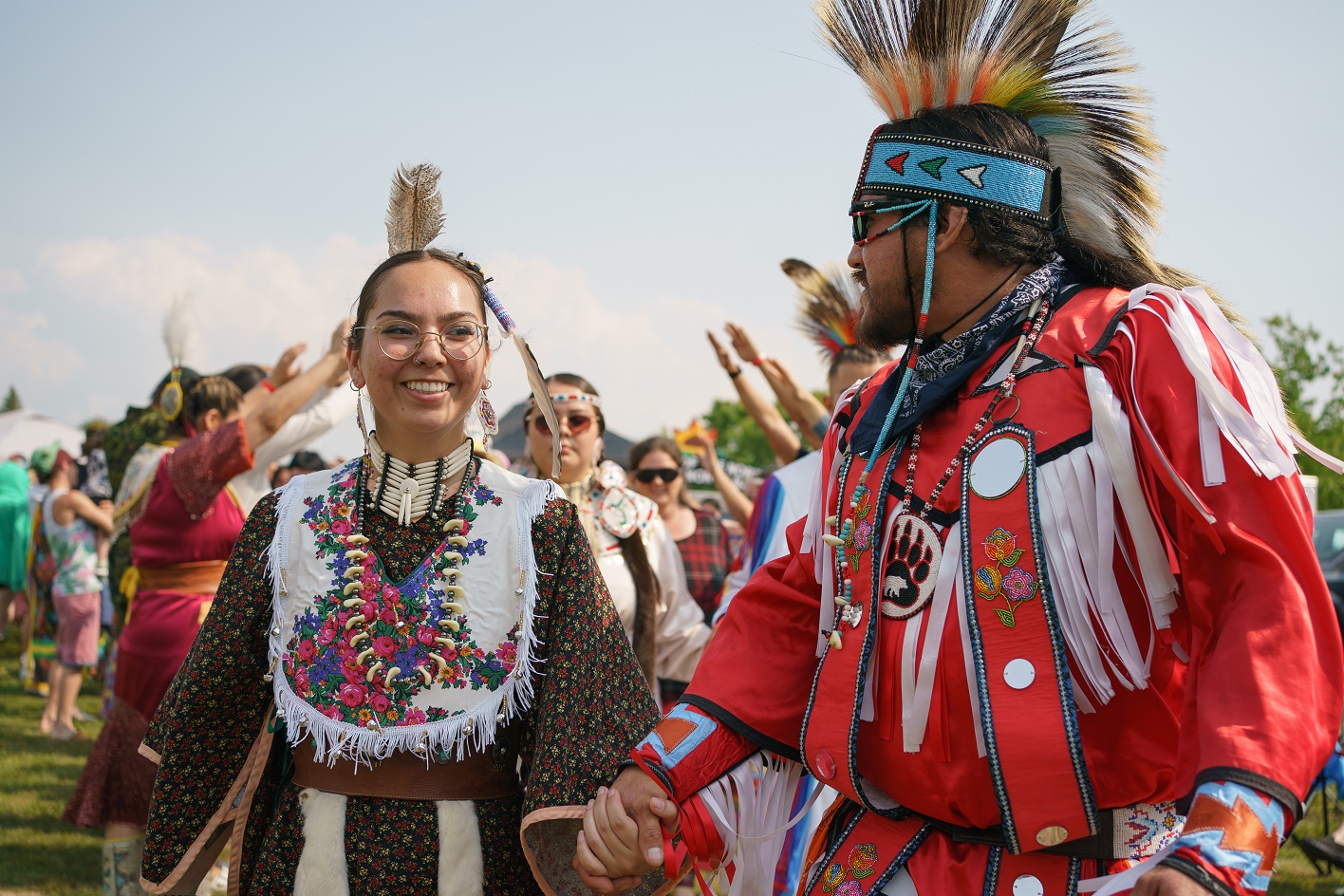Indigenous Roots

There is an ancient aura welcoming visitors to North Bay, a feeling often described as ‘finding the centre’ of something special.
It has a lot to do with the city being direct neighbours with Nipissing First Nation, home of the Anishinabek Nation’s head office.
The forested lands and water ways visitors see from the air and highway have provided an optimal gathering place for eons.
Historical documents say there were as many as 10,000 Nipissing people here when French explorers arrived 500 years ago. Samuel Champlain himself sent Jean Nicolet to live among them for nearly nine years in the early 1600s.
As part of the Fur Wars in the 1700s, Nipissings were chased out of the area by the British-backed Iroquois but survivors returned and eventually allied with the British to repel the Americans in 1814.
North Bay was a village until the railroad arrived in 1884 and became a sprawling town before gaining city status in 1925. It developed on Nipissing FN’s traditional lands, with a big part of it also on land the 1850 Robinson Huron Treaty was supposed to include in its reservation boundaries. A 2013 treaty case settlement will bring other lands in return and they created a trust with most of the cash portion to provide interest to fund development initiatives. Nipissing is also one of 17 communities to share $10 billion to settle a treaty annuities case that has been winding through the court process for years.
The city, which celebrates its 100th anniversary of incorporation in 2025, recently renamed its largest beach after Nipissing FN’s treaty signatory 173 years ago, Chief Shabogesic.
Visitors will learn more about the history taking a Lake Nipissing cruise on the Chief Commanda II boat – named after a popular leader of the Dokis First Nation, which is located on the western shores and the head of the French River.

That feeling of being at the centre of something special will be amplified at Indigenous powwow gatherings held each season. Nipissing’s traditional gathering is on Labour Day weekend, Nipissing University students celebrate later in the fall, Canadore College mid-winter and the North Bay Indigenous Friendship Centre holds an annual gathering at Lee Park in June, with the summer solstice embraced on National Indigenous Day.
What makes this part of North America a place where Indigenous people thrived prior to colonial contact?
The geography helps with several wide-reaching watersheds draining countless wetlands. Streams and rivers stretch 100s of kilometres in the four directions. Petroglyphs and sacred places can be found across the landscape.
The largest basin is Lake Nipissing, which offers world-renown sunsets and fish galore, drains westward through the famed French River to Georgian Bay and Lake Huron. Trout Lake, where the city gets its drinking water, benefits from cold springs and feeds the Ottawa River, eventually rejoining North Bay-generated spirits in the St. Lawrence.
The entire Nipissing District was an ideal place for hunting, agriculture and trading points within reach of many other Indigenous communities, each with their own abundance of natural resources.
Trails and canoe routes all led here for centuries before Voyageurs used them to criss-cross the country to exchange wares, weapons and supplies for furs. The historic La Vase portage is the best known example.
North Bay has always been a Gateway to the wonders around it. Temagami, with its old growth pines and deep water mysteries, is an hour and a bit north by car, Algonquin Park an hour southeast and popular Champlain and Restoule provincial parks are closer yet.
The city truly is the centre of a special land. And there’s a new place in the heart of North Bay to feel its ancient connections. The North Bay Indigenous Friendship Centre is unveiling this fall a spiritual place along the Eco Trail, with the Turtle Project providing culture connections and insight.
For a deeper dive into the Indigenous history of the area, see the Nipissing First Nation’s online collection of documents and publications HERE.
